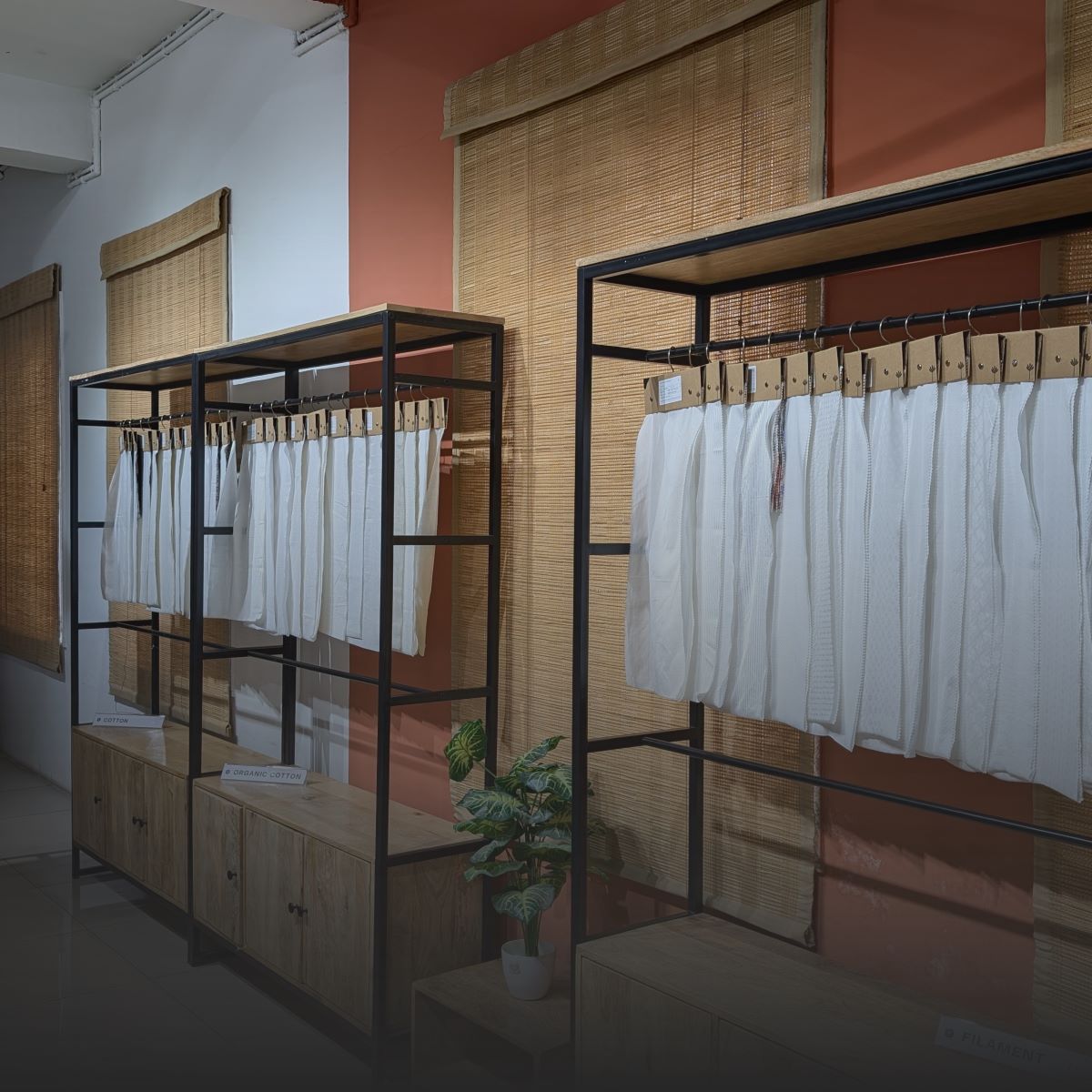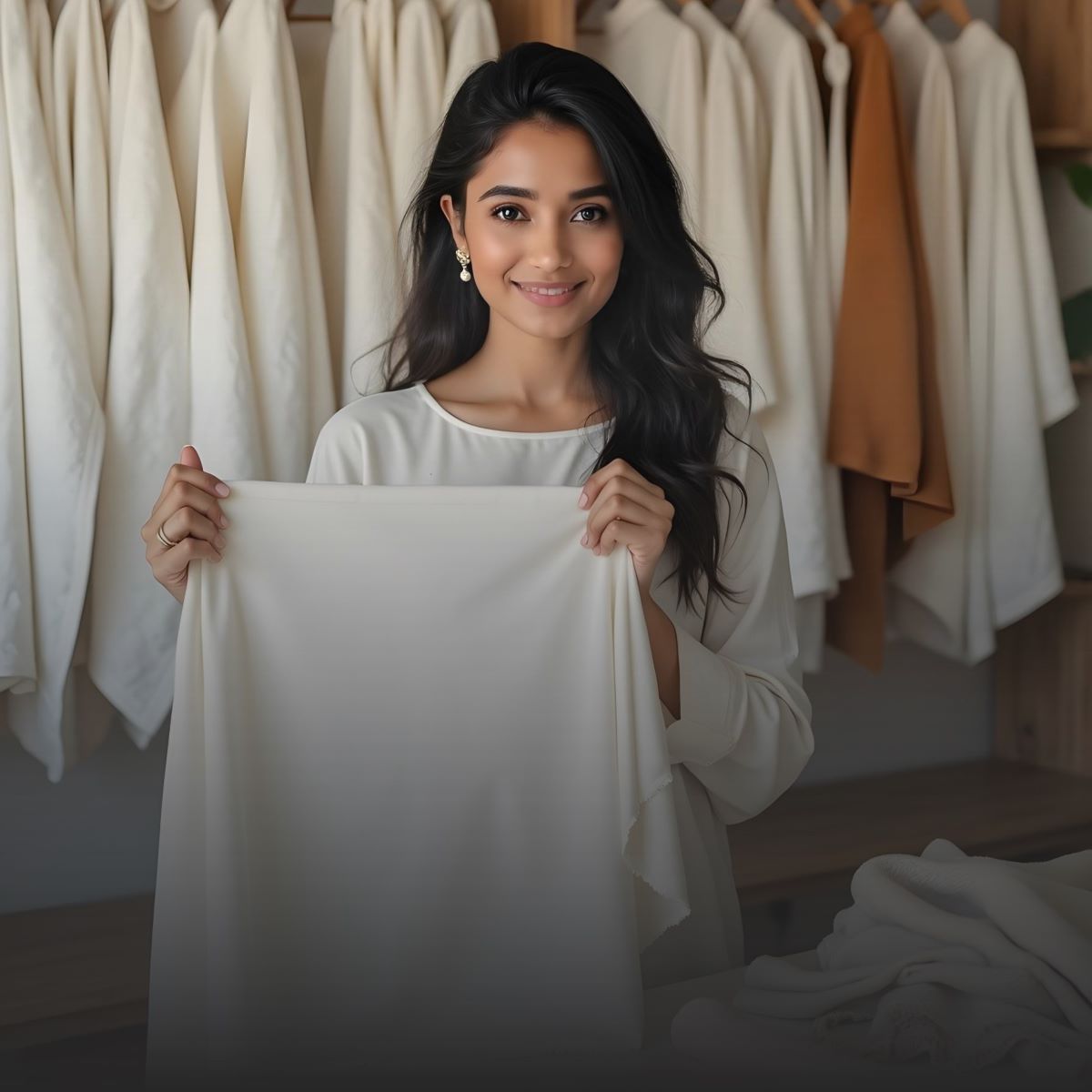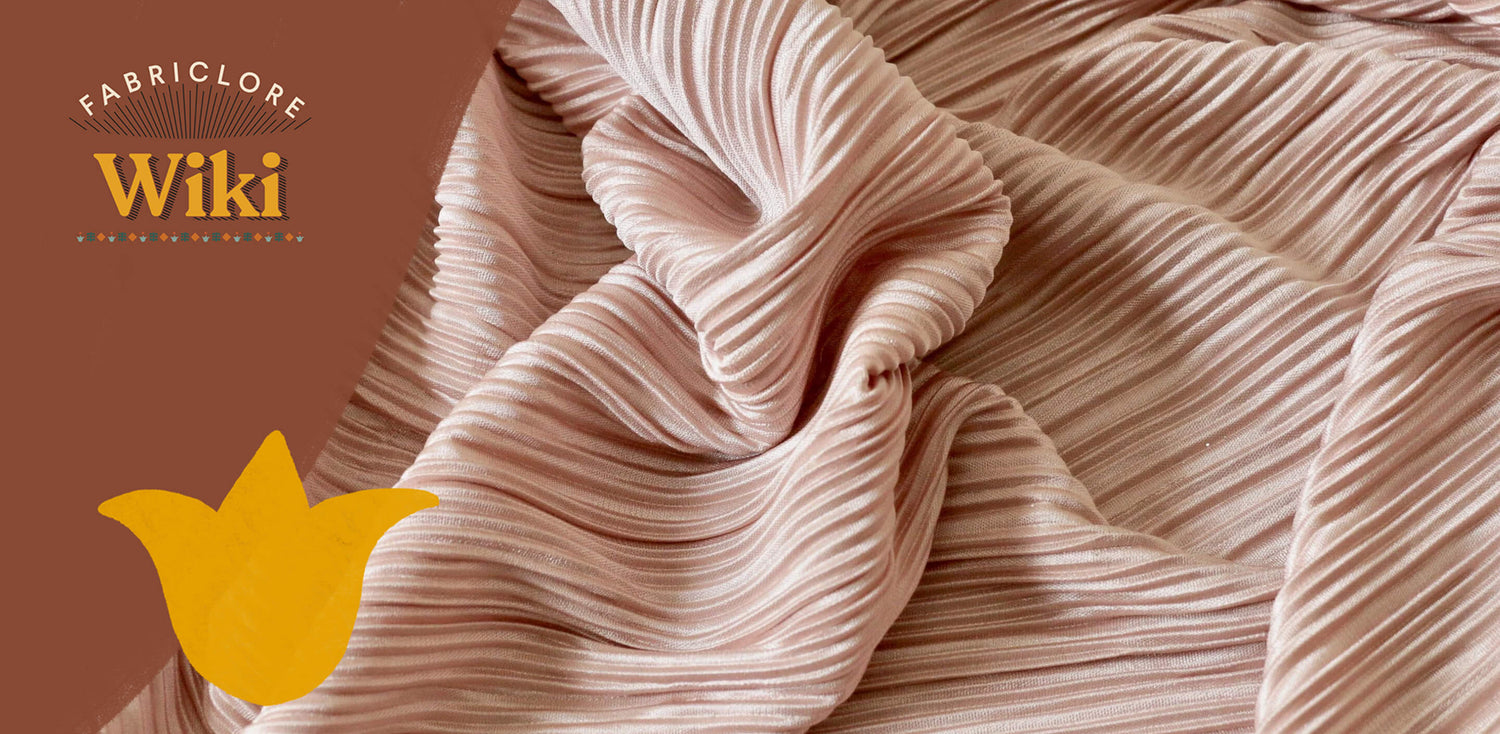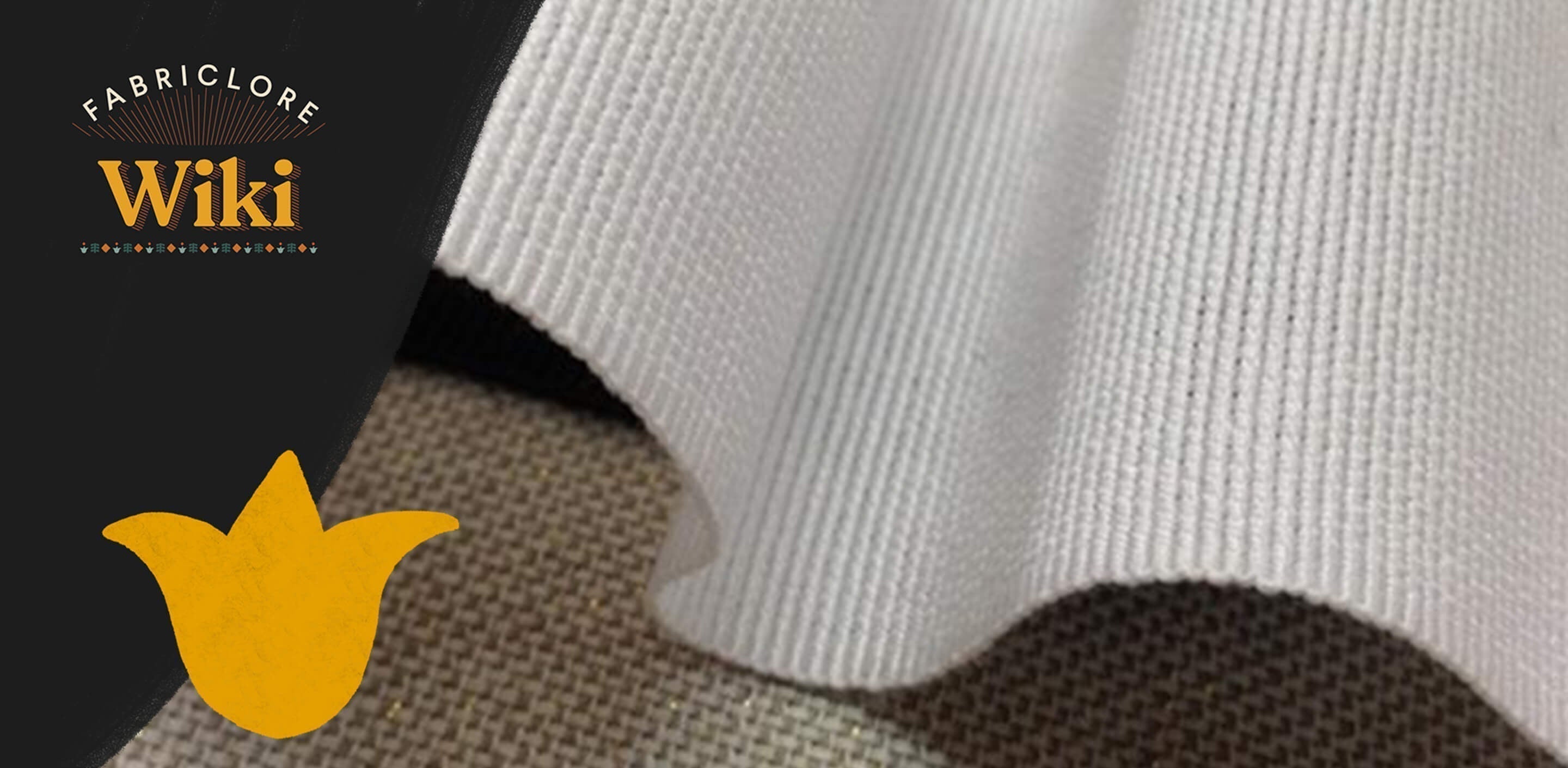Introduction to Plisse Fabric
-
Plisse fabric is light and has a unique crinkled or wrinkled texture.
- The word “Plisse” comes from French and means “pleated” or “folded.”
- This fabric looks stylish but feels soft and comfortable to wear.
- It is popular for summer clothes because it is breathable and cool.
What is Plisse Fabric?

-
Plisse fabric has a special puckered or wrinkled surface created by a chemical treatment.
- The treatment shrinks some parts of the fabric to make permanent crinkles.
- It is usually made from cotton but can also be made with polyester, silk or rayon.
- You can use Plisse for dresses, skirts, scarves, curtains and soft home furnishings.
History of Plisse Fabric
- The royals and nobility of Ancient Egypt initially used Plisse and other types of pleated textiles.
- These individuals often wore these materials as a sign of power and riches.
- Plisse fabric originated in Ancient Egypt and eventually made its way to Ancient Europe.
- It was quickly adopted in aristocratic circles, with Queen Elizabeth being one of the numerous vital people known to have sported one at some point in their lives.
- The manual process of generating plisse and pleats did not become obsolete until the 20th century when the use of pleating machines superseded it.
- Currently, only couture houses make hand-stitched pleats, which is one reason why they are so expensive and only available to the wealthiest people.
Modern Innovations in Plisse Fabric

- Today, plisse fabric is made stronger and lasts longer by using heat to set the wrinkles, especially with synthetic materials like polyester.
- Laser technology is now used to create neat and even pleats on the fabric, making it look better without extra work.
- Digital printing allows bright colors and detailed patterns to be added easily to plisse fabric.
- Because plisse fabric stretches and breathes well, it is now also used for sportswear and active clothes.
Types of Plisse Fabric:
|
Type of Plisse Fabric |
Description |
|
Cotton Plisse |
The most popular type; soft, breathable and perfect for warm weather clothes. |
|
Synthetic Plisse |
Made from materials like polyester, holds its wrinkled look well and is common in ready-to-wear. |
|
Printed Plisse |
Features patterns or designs printed on the textured surface, adding color and style. |
|
Silk Plisse |
A fancy, delicate version less common due to care needs but smooth and elegant in appearance. |
Features of Plisse Fabric

Crinkled Texture
Plisse fabric has a distinctive puckered or crinkled surface that stands out visually.
Light and Airy
It is lightweight and lets air pass through easily, making it comfortable in warm weather.
Wrinkle-Resistant
Because of its texture, plisse does not need ironing after washing.
Some Stretch
Certain plisse fabrics stretch a little, allowing for easy movement.
Advantages of Plisse Fabric
No Ironing Needed
Its natural puckered look means you do not need to iron it, just wash and wear it.
Travel-Friendly
Easy to pack, does not wrinkle easily and does not take up much space.
Low Maintenance
Most plisse fabrics are easy to wash at home and do not need special care.
Good Drape
Despite the texture, plisse flows nicely, making it flattering for different body types and styles.
Disadvantages of Plisse Fabric
Can Trap Dirt in Creases
The crinkled texture may hold on to dust or small particles if not cleaned properly.
Not Always Breathable
Synthetic versions like polyester plisse might not be as breathable as cotton, especially in humid weather.
Can Lose Texture if Washed Wrong
Improper washing (hot water, heavy spinning) can flatten or distort the pleats over time.
Delicate Handling Required
Some types, especially silk plisse, need gentle care and may not last as long if used roughly.
Limited Stretch
While it offers some give, plisse is not as stretchy as knit fabrics, which may affect comfort in tight-fitting garments.
Sustainability and Environmental Impact of Plisse Fabric

Depends on the Base Material
Plisse can be made from natural fibers like cotton (biodegradable) or synthetics like polyester (not biodegradable). The environmental impact varies accordingly.
Cotton Plisse
While biodegradable and breathable, cotton farming requires large amounts of water, land and often pesticides—unless it is organic.
Synthetic Plisse
These versions are made from fibers like polyester or nylon. They are strong and use less water to make. But they also cause microplastic pollution and do not break down naturally in the environment.
Energy Savings
One eco-friendly aspect of plisse is that it rarely needs ironing, which saves electricity and extends garment life.
Eco-Friendly Alternatives Available
Some modern plisse fabrics are made using recycled polyester or organic cotton, offering more sustainable choices for conscious designers.
Care and Maintenance Tips for Plisse Fabric

Washing
Hand wash or use a gentle machine cycle with cold water to protect the texture and prevent damage.
Avoid Wringing
Do not twist or wring the fabric; gently squeeze out excess water to maintain the pleats.
Drying
Air dry by laying flat or hanging in shade to keep the fabric’s shape and avoid sun damage.
Ironing
Usually, ironing is not needed because of the natural puckered texture. If necessary, use a low heat setting and iron from the reverse side or use a steamer from a distance.
Storage
Roll the fabric or hang garments to avoid crushing the pleats. Avoid folding tightly to maintain the textured effect.
Handling Tips
Handle with care to avoid stretching or pulling that can distort the pleats.
The Role of Plisse in Fashion and Design

Fashion Use
Plisse fabric is popular in summer clothing because it is lightweight and breathable. Its textured look adds style without extra effort.
Retro and Modern Styles
It works well with both old-style and modern designs, so it can match many different fashion styles.
Accessories
Plisse fabric is also used for scarves and wraps because of its comfortable stretch and stylish texture.
Benefits for Designers
Its natural wrinkle resistance and easy care make it a practical choice for busy designers and customers.
Common Applications and Uses of Plisse Fabric
Apparel
Plisse is widely used in dresses, skirts, blouses and lightweight tops. Its texture adds style without needing extra details.
Travel Wear
The fabric’s wrinkle resistance and breathability make it ideal for travel clothes. It stays fresh and comfortable during long trips.
Plisse is popular for curtains and light upholstery. Its texture adds visual interest and helps diffuse natural light softly.
Scarves, shawls and wraps often use Plisse because it drapes well and feels comfortable against the skin.
Seasonal Versatility
Though mostly used in warm weather clothing, Plisse can also be layered for cooler seasons, making it useful year-round.
Manufacturing Process of Plisse Fabric:
|
Step |
What Happens |
|
Base Fabric Selection |
Choose lightweight fabrics like cotton, polyester, rayon or silk that can handle puckering. |
|
Chemical Treatment |
Treat fabric with a chemical (usually sodium hydroxide) that shrinks some areas to create puckers. |
|
Heat Application |
Apply heat to set the puckered texture permanently so it stays after washing. |
|
Washing and Neutralizing |
Wash the fabric well to remove chemicals and make it safe and comfy to wear. |
|
Finishing Touches |
Soften, dry and sometimes print or dye the fabric to improve look and feel. |
|
Quality Checks |
Inspect fabric for even texture, strength and color quality before selling. |
Plisse Fabric vs. Other Fabrics:
|
Feature |
Plisse Fabric |
Other Fabrics |
|
Texture |
Naturally crinkled or puckered surface |
Usually smooth (like plain cotton or silk) |
|
Comfort |
Lightweight and breathable, good for warm weather |
Can be heavier and less breathable (like wool) |
|
Care |
Needs little or no ironing as wrinkles are hidden |
Often wrinkles easily and needs ironing |
|
Durability |
Depends on base fiber; cotton is strong, synthetics last longer |
Varies widely depending on fabric type |
|
Cost |
Usually mid-range to premium depending on fiber and finish |
Varies from low to high depending on fabric |
|
Style |
Stylish and functional, popular in summer fashion |
Styles vary, often flat and less textured |
Where You Can Buy Plisse Fabric
-
Online Stores: Websites like Fabriclore, Etsy and Mood Fabrics offer a variety of plisse fabrics in different fibers and colors.
-
Local Fabric Shops: Many local fabric stores, especially in bigger Canadian cities like Toronto and Vancouver, stock plisse fabric, especially during the spring and summer seasons.
-
Specialty Boutiques: Some boutiques focused on sustainable or natural fabrics may carry cotton or silk plisse.
-
Seasonal Availability: Since plisse is popular for warm weather, it is more commonly available in spring and summer.
- Custom Orders: Some suppliers allow custom orders for plisse fabric, including specific colors or fiber blends.
Conclusion
Plisse fabric is light and has a crinkled, pleated look. The name comes from a French word meaning "pleated." It is made from materials like cotton fabric, polyester fabric, rayon fabric or silk fabric . The fabric is breathable, does not wrinkle easily and is simple to care for, perfect for summer clothes and travel outfits.
Besides fashion, plisse is also used in home decor, like curtains and soft fabrics. Its stylish texture and easy maintenance make it a favorite choice for many designers and creators.
FAQs
What is plisse fabric?
Plisse fabric is a lightweight, textured textile made by applying heat and chemicals to create permanent puckered or crinkled patterns. It is usually made from cotton, polyester, rayon or silk fibers. Popular in Canadian fashion, plisse offers breathability and a stylish, wrinkle-resistant look, making it ideal for summer clothing and casual wear.
Is plisse good for hot weather?
Yes, plisse fabric is excellent for hot weather. Its puckered texture improves airflow and breathability, helping keep the wearer cool and comfortable. Canadian designers often choose plisse for summer collections because it is lightweight, moisture-wicking and does not cling to the skin.
What does plisse fabric feel like?
Plisse fabric has a soft, slightly textured feel due to its crinkled surface. It is lightweight and flexible, often described as airy and comfortable against the skin. The fabric’s puckered texture gives it a unique tactile quality that adds style without compromising comfort, popular among Canadian clothing brands.
What is the difference between pleats and plisse?
Pleats are deliberate folds in fabric created by sewing or pressing, often used for structure in garments. Plisse, on the other hand, is a fabric treatment where heat and chemicals create permanent puckered or crinkled patterns without sewing. While pleats are smooth folds, plisse has a textured, puckered surface that is wrinkle-resistant and low-maintenance.
We also happen to be a magnet for suggestions, and would love to catch yours….throw us yours on hello@fabriclore.com





